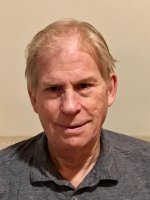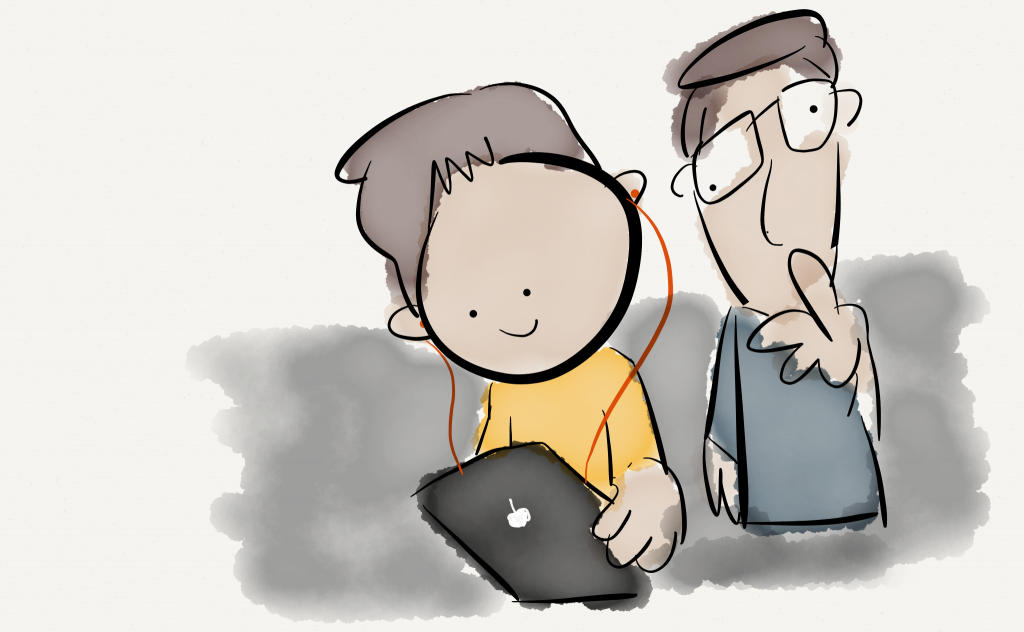Municipal networks could prove key to fixing the digital divide across the United States.
By David Rosen
It’s mid-afternoon on a weekday amid the deepening COVID-19 pandemic. A school bus arrives at Cyliss Castillo’s home on the Navajo Nation reservation in Cuba, New Mexico. The bus driver, Kelly Maestas, chats with eighteen-year-old Castillo, gives him a bag of food, and collects his school assignments. Then he sets off for another home.
----------------
In many cases, community broadband networks fill the void created by the failures of the giant telecom companies.
----------------
Castillo, like many others living on tribal land, doesn’t have electricity. Where he lives, Internet service is unavailable or prohibitively expensive. His school issued him a laptop but he has difficulty charging it. He must use a car battery or go to a relative’s house.
One of Castillo’s fellow students sends her laptop on the bus to be
charged at school. Some ask for paper assignment packets because of how hard it is for them to use computers.
“Hopefully by next semester we’ll be going back into school,” Castillo says. “I don’t like online. I like to be, you know, in school, learning.”
Digital inequality is rampant throughout the nation. It is most pronounced in rural communities and in Native American households, as well as in many inner-city Black and Latinx neighborhoods.
“The digital divide existed before the pandemic,” says Mara Tieken, an associate professor of education at Maine’s Bates College. “We knew about it, and we didn’t do anything about it. What happened during the pandemic horrified us but shouldn’t have surprised anyone.”
Tieken, the author of Why Rural Schools Matter, tells The Progressive that “rural schools were open for face-to-face learning during the pandemic at a greater rate than urban schools. Rural districts knew that if they were not open for face-to-face learning, a lot of their kids would have no access.”
Rural schools do have some advantages, Tieken notes: “They are small and can be nimble, and many know their students very well.”
In addition to picking up and delivering assignments, many buses in rural communities are outfitted with Wi-Fi for wireless connections; after school, some buses park in an area where local parents can bring their kids for Internet access. As Tieken says, “school buses are literally a lifeline.”
---------------------------------
The U.S. Census classifies “rural” places as those with less than 2,500 residents. About 20 percent of rural residents in the United States are people of color, about 10.3 million people, consisting of about 40 percent Black, 35 percent Latinx, and the remaining 25 percent Native American, Asian, Asian Pacific Islander, or multiracial.
In the decade from 2000 to 2010, the rural population of color grew by nearly 1.7 million people, or 20 percent, due to what Tieken calls “a rapidly expanding rural Hispanic population.”
But the big telecom companies don’t reach millions of Americans, especially in rural areas. Sascha Meinrath, a professor of telecommunications at the Pennsylvania State University, says the advent of 5G—“Fifth Generation”—wireless technology could put rural areas at a further disadvantage.
“5G is a very useful technology for hyper-fast communications and it can be great in some areas—richer, more urban, and denser areas with fiber infrastructure,” he says. “The characteristics of the bands and frequencies that 5G uses are not good for rural areas with hills or trees.” And rural areas “don’t have the fiber infrastructure that can work at 5G speeds.”
In a 2019 paper, Meinrath argued that “official estimates are downplaying the true state of the digital divide because they rely on self-reported data by Internet service providers.” He said the gap between actual speed and advertised speeds “is far greater in rural areas of the state than in urban areas.”
In many cases, community broadband networks fill the void created by the failures of the giant telecom companies. As of April 2021, reports BroadbandNow, there were 528 such networks operating throughout the country. They offer phone, Internet, and video connectivity at superior quality services for a lower price and are accountable to the communities they serve.
Christopher Mitchell, director of the Community Broadband Networks Initiative at the Institute for Local Self-Reliance, describes community networks as an “umbrella concept that covers a number of different nonprofit business models.” These include municipal networks, which are owned by local governments, and cooperative networks, which are “owned by everyone who receives services from it.”
---------------------------------
Curtis Wynn was born and raised in Graceville, Florida, a rural community located near Tallahassee. While in high school, he landed a job at a local rural co-op utility. “I always knew that I wanted to work at the co-op,” he says. A supervisor encouraged him to go to college, and he graduated from Alabama’s Troy University with a degree in business and information systems.
Wynn, chief executive officer and president of Roanoke Electric Cooperative of Aulander, North Carolina, recently stepped down as board president of the National Rural Electric Cooperative Association, the first African American to lead either group. “We knew many residents needed access to the Internet during this pandemic,” he says about Roanoke Electric, “for telemedicine appointments, working remotely, doing schoolwork, applying for jobs, or filing for unemployment benefits.”
But even now, he notes, “not everyone has that access from home—yet.”
When his cooperative first brought electricity to rural North Carolina more than eighty years ago, it provided “a critical service to ensure the vitality of our member communities.” Wynn says it applied the same spirit to its efforts to ensure connectivity during the pandemic.
During the Great Depression, President Franklin Roosevelt signed the Rural Electrification Act of 1936, which devoted federal funds toward dam-building, installing power lines, and wiring homes. It also enabled cooperatives to borrow money to bring electricity to rural states.
The Roanoke Electric Cooperative was chartered on September 30, 1938, and has expanded to more than 2,000 miles of line. It now serves more than 14,500 member-owners in Bertie, Halifax, Hertford, Northampton, Gates, Perquimans, and Chowan Counties—all considered “distressed counties” with low population densities.
“Cooperatives are democratic organizations controlled by their members, who actively participate in setting policies and making decisions,” the cooperative declares on its website.
Perhaps the best-known municipal telecom network is operated by EPB, formerly known as the Electric Power Board of Chattanooga, Tennessee. It implemented the world’s first community-wide ten-gigabit Internet service, available to nearly 180,000 homes and businesses. It services a 600-square-mile area including Red Bank, East Ridge, Ridgeside, Hamilton County, Signal Mountain, and Soddy-Daisy in Tennessee, and Rossville and Lookout Mountain in Georgia.
In fact, Chattanooga’s status as a high-tech municipality—“Gig City,” as it’s been called—owes largely to chance. As the story goes, Volkswagen executives looking to locate a new sophisticated manufacturing facility in the city expressed concern that it sits in the midst of what is popularly known as “Dixie Alley,” making it especially vulnerable to electrical outages.
In response, city leaders proposed that its municipal electrical service would build a “smart” fiber-optic grid that could reroute electricity in case of an emergency. The grid was built in 2010, and was followed by Volkswagen’s high-tech plant in 2011. And with the fiber cables strung on city lamp posts, EPB realized it could offer fiber service to its electrical customers. And so, the city got wired.
Today, the network’s “smart grid” involves 170,000 intelligent electric meters, all reporting every fifteen minutes. It monitors and can respond to outages, emergencies, and electricity theft in real time. According to a White House report, EPB has “cut the duration of power outages by 60 percent, saving local businesses and industry an estimated $45 to $60 million.”
Another municipal broadband service of note is Bristol Tennessee Essential Services. It began offering cable and Internet service via a digital subscriber line in 2005, and telephone service in 2006; it moved to offering one-gigabit service via a fiber-optic network in 2012. It serves an estimated 33,000 customers, including about 15,000 households.
“To give an example of how fast [this service is], you can download about two hours of video or upwards of 200 songs in just six seconds,” says Michael Browder, chief executive officer of Bristol Tennessee Essential Services.
---------------------------------
In 2015, President Barack Obama issued an executive report, “Community-Based Broadband Solutions: The Benefits of Competition and Choice for Community Development and Highspeed Internet Access.” It noted:
“Competitive markets have helped drive expansion in telecommunications services as strong infrastructure investments and falling prices have opened up a wide range of new communications products and services. Where there is strong competition in broadband markets today, it drives similar improvements. Unfortunately, competition does not extend into every market and its benefits are not evenly distributed.”
The report went further, pointing out that “over the past few years . . . municipal networks have emerged as a critical tool for increasing access, encouraging competition, fostering consumer choice, and driving local and regional economic development.”
Susan Crawford, a Harvard Law School professor, is the strongest advocate for replacing the privately operated, quasi-monopoly telecom system for one based on a public utility model. As she writes in her 2019 book, Fiber: The Coming Tech Revolution—and Why America Might Miss It, “A handful of private companies dominate last-mile data delivery in American cities.” She adds, “They choose the richest, densest areas to serve with expensive second-class services—not with malign intention, but with a detrimental effect on the country.”
A utility like broadband, Crawford has written, “is not a luxury.” But “services that start off as luxuries can become utilities as their centrality to life becomes clear.”
Mitchell frames the key question like this: “What is the minimum quality connection that a household needs to take advantage of modern applications that are in common use?” He advocates for higher standards than those used by the Federal Communications Commission.
And Mitchell is skeptical of President Joe Biden’s broadband plan, which now calls for a $65 billion federal investment. The Biden Administration, he says, “wants to do two things that are incompatible. One is that it wants to improve broadband for a lot of Americans, or a majority of Americans. And the second thing is that it doesn’t want to piss-off the telecom companies.” In fact, “He can’t do one without doing the other.”

David Rosen of New York City is the author of the book Sin, Sex & Subversion: How What Was Taboo in 1950s New York Became America’s New Normal (Skyhorse, 2016).
This article original appeared in The Progressive, and online.

